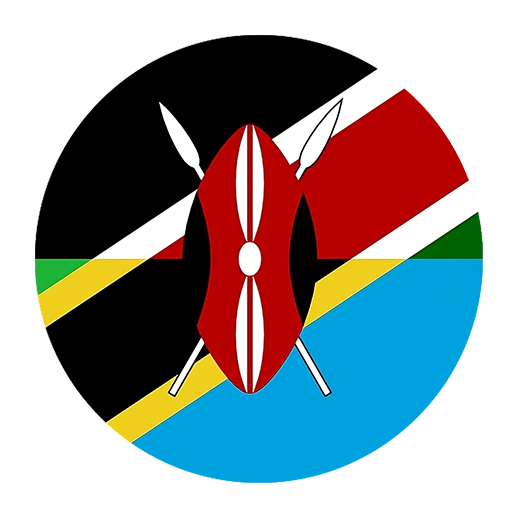Swahili, also known as Kiswahili, is a Bantu language spoken by millions of people in East Africa. It serves as a lingua franca in countries such as Kenya, Tanzania, Uganda, and the Democratic Republic of Congo. One of the intriguing aspects of Swahili grammar is the agreement system, which ensures that different parts of a sentence match in terms of class and number. Adjective agreement is a key part of this system and can be a challenging aspect for learners to master. This article will delve into the rules and examples of Swahili adjective agreement, providing you with a comprehensive guide to help you navigate this fascinating language feature.
Understanding Noun Classes
Swahili nouns are categorized into noun classes, which are similar to grammatical genders in languages like French or Spanish. Each class has a specific prefix that governs the form of the adjectives, verbs, and other words that agree with the noun. There are 18 noun classes in Swahili, but for simplicity, we will focus on the most common ones relevant to beginners.
Common Noun Classes
1. **Class 1/2 (M-/WA-)**: Typically used for people.
– Mtu (person)
– Watu (people)
2. **Class 3/4 (M-/MI-)**: Often used for natural objects and plants.
– Mti (tree)
– Miti (trees)
3. **Class 5/6 (JI-/MA-)**: Used for various objects, including fruits and large entities.
– Jicho (eye)
– Macho (eyes)
4. **Class 7/8 (KI-/VI-)**: Often used for tools, small objects, and diminutives.
– Kitabu (book)
– Vitabu (books)
5. **Class 9/10 (N-/N-)**: Used for animals and foreign words.
– Ndizi (banana)
– Ndizi (bananas)
6. **Class 11 (U-)**: Typically used for abstract concepts.
– Ulimi (language, tongue)
Adjective Agreement Rules
Adjectives in Swahili must agree with the nouns they describe in both class and number. This agreement is shown by changing the prefix of the adjective to match the noun class prefix. Below, we will explore the rules for adjective agreement in the various noun classes mentioned.
Class 1/2 (M-/WA-)
For singular nouns in Class 1, the adjective prefix is “m-“:
– **Example**: Mtu mzuri (good person)
For plural nouns in Class 2, the adjective prefix is “wa-“:
– **Example**: Watu wazuri (good people)
Class 3/4 (M-/MI-)
For singular nouns in Class 3, the adjective prefix is “m-“:
– **Example**: Mti mrefu (tall tree)
For plural nouns in Class 4, the adjective prefix is “mi-“:
– **Example**: Miti mirefu (tall trees)
Class 5/6 (JI-/MA-)
For singular nouns in Class 5, the adjective prefix is “ji-“, but often the prefix is dropped when the noun starts with a vowel:
– **Example**: Jicho jekundu (red eye)
– **Example**: Jina kubwa (big name)
For plural nouns in Class 6, the adjective prefix is “ma-“:
– **Example**: Macho mekundu (red eyes)
– **Example**: Majina makubwa (big names)
Class 7/8 (KI-/VI-)
For singular nouns in Class 7, the adjective prefix is “ki-“:
– **Example**: Kitabu kizuri (good book)
For plural nouns in Class 8, the adjective prefix is “vi-“:
– **Example**: Vitabu vizuri (good books)
Class 9/10 (N-/N-)
For both singular and plural nouns in Class 9/10, the adjective prefix is “n-” or “ny-” before vowels:
– **Example**: Ndizi nzuri (good banana/good bananas)
– **Example**: Nyumba nzuri (good house/good houses)
Class 11 (U-)
For singular nouns in Class 11, the adjective prefix is “u-“:
– **Example**: Ulimi mrefu (long tongue)
Class 11 does not have a plural form in the same sense as the other classes, so pluralization would depend on context or compound forms.
Special Cases and Exceptions
While the rules above cover most scenarios, there are a few special cases and exceptions to be aware of:
Adjectives with Invariable Forms
Some adjectives do not change their form regardless of the noun class. For example, the adjective “kubwa” (big) often retains its form:
– Kitabu kikubwa (big book)
– Vitabu vikubwa (big books)
Adjectives with Irregular Forms
A few adjectives have irregular forms that don’t follow the standard prefix changes. Learning these irregular forms is essential for fluency:
– Mtu mzuri (good person) / Watu wazuri (good people)
– Jina zuri (good name) / Majina mazuri (good names)
Compound Adjectives
In compound adjectives, where two adjectives are used together, both must agree with the noun class:
– Mtu mrefu mzuri (tall, good person)
– Watu warefu wazuri (tall, good people)
Practical Examples
To consolidate your understanding, let’s look at some practical examples involving different noun classes and adjectives:
Class 1/2 (M-/WA-)
– Mwanafunzi mchapakazi (hard-working student)
– Wanafunzi wachapakazi (hard-working students)
Class 3/4 (M-/MI-)
– Mto mrefu (long river)
– Mito mirefu (long rivers)
Class 5/6 (JI-/MA-)
– Jambo jema (good thing)
– Mambo mema (good things)
Class 7/8 (KI-/VI-)
– Chombo kizuri (nice tool)
– Vyombo vizuri (nice tools)
Class 9/10 (N-/N-)
– Siku nzuri (good day/good days)
– Habari njema (good news)
Practice Exercises
To master Swahili adjective agreement, practice is essential. Here are some exercises to help you apply what you’ve learned:
Exercise 1: Identify the Correct Adjective Prefix
Match the noun with the correct adjective prefix:
1. Mwanafunzi (student) + mzuri (good) = ?
2. Vitabu (books) + -zuri (good) = ?
3. Miti (trees) + -refu (tall) = ?
4. Majina (names) + -kubwa (big) = ?
Exercise 2: Form Complete Sentences
Use the correct adjective prefix to form complete sentences:
1. Kitabu (book) + -kubwa (big) = ?
2. Watoto (children) + -cheka (happy) = ?
3. Nyumba (house) + -safi (clean) = ?
4. Machungwa (oranges) + -tamu (sweet) = ?
Exercise 3: Translate Sentences
Translate the following sentences into Swahili, ensuring proper adjective agreement:
1. The tall person = ?
2. The good trees = ?
3. The sweet oranges = ?
4. The long rivers = ?
Conclusion
Swahili adjective agreement is a fundamental aspect of mastering the language. By understanding the rules and practicing regularly, you can become proficient in using adjectives correctly in various contexts. Remember that the key to success lies in continuous practice and exposure to the language. Engaging with native speakers, reading Swahili texts, and listening to Swahili media can significantly enhance your learning experience.
Happy learning, or as they say in Swahili, “kujifunza kwa furaha”!

